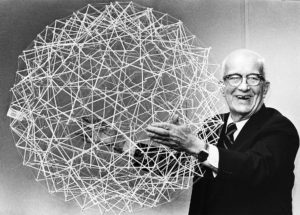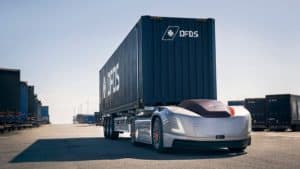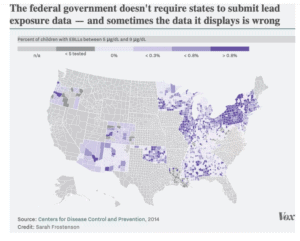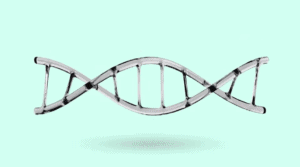
R. Buckminster Fuller holds up a Tensegrity sphere. 18th April, 1979.
Credit: PBS
In 1969, I was in Washington, D.C., a 27-year-old editor of Seapower, a journal of maritime and naval affairs. Late one afternoon in the spring I was approached by the director of the Navy League, a non-profit foundation that sponsored the magazine, who said to me, “This is something that might interest you, Stephan. How would you like to spend the day with Buckminster Fuller?”
Fuller was scheduled to give the keynote address at the Navy League’s Annual Conference. He was to be picked up at his hotel about 10 a.m. and needed to be staffed for the day. If I volunteered, I was to take him wherever he wanted to go and just make sure things went smoothly. I agreed immediately and was struck by the relief in the director’s face. I realized he did not want to be burdened with Fuller for a whole day, just before the conference, and was glad I […]

Carrier Strike Group
Credit: NBC
In its quest for security, the United States spends more on the military than any other country in the world, certainly much more than the combined military spending of its major rivals, Russia and China. Authorized at over $700 billion in Fiscal Year 2019, and again over $700 billion requested for FY2020, the Department of Defense (DOD) budget comprises more than half of all federal discretionary spending each year. With an armed force of more than two million people, 11 nuclear aircraft carriers, and the most advanced military aircraft, the US is more than capable of projecting power anywhere in the globe, and with “Space Command,” into outer-space. Further, the US has been continuously at war since late 2001, with the US military and State Department currently engaged in more than 80 countries in counterterror operations.2
All this capacity for and use of military force requires a great deal of energy, most of it in the form of fossil fuel. As General David Petraeus said in 2011, “Energy is the lifeblood […]

Volvo Trucks’ Vera is set to go to work moving containers around a logistics center in Sweden
Credit: Volvo Trucks
What would trucks look like if they didn’t need to accommodate a human driver? Volvo Trucks’ Vera vehicle is an exploration of this idea, doing away with the cabin entirely so it can more efficiently tow goods around ports and factories. The freewheeling four-wheeler has just been assigned its first task, and will soon go to work delivering containers to a port terminal in Sweden.
Revealed in September last year, the autonomous Vera is powered by the same drivetrain and battery packs found in Volvo’s electric trucks. It is, however, more electric sled than electric big rig, consisting of four-wheels and a low-profile body that can be latched onto by standard load carriers and trailers.
The thinking is that one day fleets of connected Veras can scurry around ports, factories and other facilities with large loads on the back. Communicating with one another via […]
 We’ve grown too daunted to solve America’s lead crisis because of the sheer amount of money necessary to clean it up. But the fact that it’s a really big problem — one that does inordinate harm to children, in particular — is exactly why it’s worth trying to solve.
We’ve grown too daunted to solve America’s lead crisis because of the sheer amount of money necessary to clean it up. But the fact that it’s a really big problem — one that does inordinate harm to children, in particular — is exactly why it’s worth trying to solve.
As the 2020 Democratic presidential primary heats up, and candidates stake out their policy positions, every candidate should propose a solution. Former Housing and Urban Development Secretary Julián Castro, to his credit, is proposing a big, comprehensive plan to tackle lead. But the amount of money he’s proposing to dedicate to the problem, while large compared to today’s inadequate efforts, is still relatively modest compared to the scale of the problem.
We know lead is a dangerous neurotoxin. Regulators years ago forced an end to its routine use as an additive to paint and gasoline or its use as a metal of choice in water pipes. But many old houses are full of old lead paint. Lead water pipes run beneath the streets of many of our houses. Most […]

Illustration: Rebecca Zisser/Axios
Two prominent teams of scientists recently announced transposons — or “jumping genes” — can improve the precision of CRISPR gene editing.
Why it matters: While this research is still in early stages, as both teams tested their techniques on bacterial cells, experts say the technique could allow edited genes to be more precisely inserted into genomes, possibly addressing concerns with current CRISPR systems that can lead to off-target editing and random deletions or even cancer.










